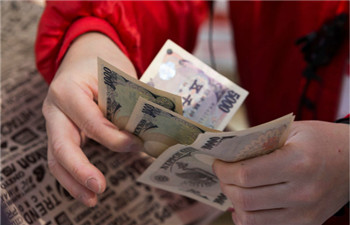(单词翻译:单击)

Shinzo Abe has put Japan at the forefront of a global shift away from austerity and towards looser fiscal policy as he launched a ¥4.6tn ($45bn) stimulus to boost a struggling economy.
安倍晋三(Shinzo Abe)带领日本置身于从紧缩转向更宽松财政政策的全球转变的前沿。他出台了一项4.6万亿日元(合450亿美元)的刺激方案,以提振困境中的日本经济。
The package marks a return to the basics of the prime minister’s Abenomics programme, which was supposed to combine monetary and fiscal stimulus, as Japan wrestles with weak consumption and the drag on exports from a stronger yen.
这个方案标志着回归“安倍经济学”的基本理念,即结合货币和财政刺激。目前日本正在苦苦应对消费疲弱和强势日元对出口的拖累。
“The key word is investment in the future,” said Mr Abe as he announced the decision in cabinet. He exhorted ministries to put the package into effect as fast as possible.
“关键词是投资于未来,”安倍在内阁会议上宣布这一决定时表示。他要求各部尽快落实这个刺激方案。
Although Mr Abe proclaimed a total package of ¥28.1tn, actual new government spending is ¥6.2tn, of which ¥4.6tn — 0.9 per cent of gross domestic product — will fall in the current fiscal year. “There was no surprise at all,” said Daiju Aoki, an economist at UBS in Tokyo. “Last year we had ¥3.3tn and this year it will be ¥4.6tn.”
虽然安倍宣称整个方案价值28.1万亿日元,但实际的政府新支出为6.2万亿日元,其中4.6万亿日元——相当于日本国内生产总值(GDP)的0.9%——将在当前财年拨付到位。“没有任何意外,”瑞银(UBS)驻东京经济学家青木大树(Daiju Aoki)表示,“去年是3.3万亿日元,今年将是4.6万亿日元。”
The package includes ¥2.5tn in welfare spending, ¥1.7tn for infrastructure, ¥0.6tn for small businesses hit by “uncertainty due to Brexit” and ¥2.7tn for reconstruction after an earthquake on the island of Kyushu this year.
该方案包括2.5万亿日元福利支出,1.7万亿日元投入基础设施,0.6万亿日元帮助受到“英国退欧不确定性”影响的中小企业,以及2.7万亿日元用于今年九州岛地震后的重建工程。
Welfare spending is expected to include childcare subsidies and a payment of ¥15,000 ($147) each for 22m low-income individuals. Direct spending on families and low-income households should find its way into consumption quickly. Some of the infrastructure spending may not take effect for years.
福利支出预计将包括托儿补贴以及向2200万低收入者每人支付1.5万日元(合147美元)。直接向家家户户,尤其是低收入家庭发放福利,应该会对消费起到立竿见影的提振作用。其中一些基础设施支出可能需要多年才能见效。
The stimulus comes after the Bank of Japan disappointed markets with a modest addition to its monetary stimulus last week, upping the pace of stock market purchases to ¥6tn a year.
出台财政刺激之前,日本央行(Bank of Japan)上周让市场失望,仅适度加大其货币刺激政策的力度,把股市买入规模增加到每年6万亿日元。
Taro Aso, finance minister, sought to portray the stimulus as a joint effort with the BoJ, holding an unusual meeting with central bank chief Haruhiko Kuroda last night to discuss the details.
财务大臣麻生太郎(Taro Aso)寻求把这个刺激方案描绘成安倍政府与日本央行的联合努力,昨晚他与央行行长黑田东彦(Haruhiko Kuroda)举行不寻常的会议,讨论细节。
“We want to accelerate Abenomics in co-operation with the BoJ,” Mr Aso said. Mr Kuroda sought to keep fiscal and monetary policy separate, saying only that there is “synergy between the stimulus measures and the accommodative financial environment”.
“我们要与日本央行合作,加快安倍经济学,”麻生太郎表示。黑田东彦则寻求保持财政和货币政策相互独立,只是说“刺激措施和宽松金融环境之间存在协同效应”。


